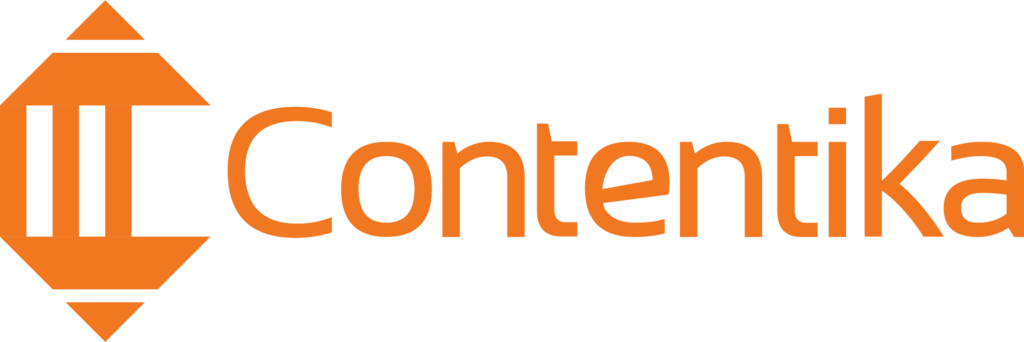In today’s digital age, businesses are constantly seeking innovative ways to establish meaningful connections with their customers. And one such strategy that has gained immense popularity is content marketing. By creating engaging content, businesses can effectively communicate their message and drive sales.
However, measuring the effectiveness of your content marketing campaigns is crucial to ensure that your efforts are yielding the desired results.
Content marketing can help you expand your reach, increase brand recognition, and create valuable engagement with your target audience. But how do you know if your content marketing strategy is working? That’s where metrics come in. In this blog post, we’ll delve into the 10 essential metrics you need to measure the success of your content marketing campaign.
Whether you’re new to content marketing or a seasoned professional, these metrics will give you valuable insights into your campaigns’ performance. So, let’s dive in and learn how to measure the impact of your content marketing efforts.
What Are the Benefits of Measuring Your Content Marketing Success?
Measuring your content marketing success is essential to understanding the impact of your efforts and how you can improve them.
Tracking the right metrics also allow you to:
- track progress, identify opportunities for improvement and adjust your strategy to achieve more successful results.
- stay focused on what matters most, so you can effectively and efficiently reach your desired outcomes.
- optimize your content, maximize its effectiveness and provide more value to your audience.
- better measure ROI and make data-driven decisions about your marketing strategy.
- make better use of available tools and resources to achieve successful results in a shorter period.
- get valuable insights into what is working for your brand and why—information that can be used to refine further and improve future campaigns.
Ultimately, measuring success allows you to gain greater control over the effectiveness of your content marketing efforts so that you can drive long-term success for your business.
What Are the Key Metrics for Content Marketing Success?
1. Audience Engagement: Measuring Interactions and Attention
Audience engagement is an indication of how much interaction and attention your content is garnering from your target audience, and tells you whether it resonates with them or not.
Audience engagement can be measured through various metrics such as likes, shares, comments, and views on social media channels; return visits to web pages; subscription rate to newsletters; downloads of white papers, ebooks, and other materials; mentions in conversations; and website dwell time (how long a user spends on a page).
By tracking these engagement metrics over time, you can gain valuable insights into how well-received your content is by its intended audience.
Audience engagement also gives brands a better understanding of their target audience’s interests, allowing them to create content that meets those needs. As such, it is essential for creating content that resonates and drives conversions.
2. Conversion Rate: Evaluating Your Content’s Effectiveness in Generating Leads
The conversion rate of your content is an essential metric to understand the effectiveness of your content in generating leads. It measures the number of people who take a desired action (e.g., purchase, sign-up) after being exposed to it.
You can calculate the metrics by dividing the total number of conversions by the total number of people who were exposed to the content.
According to research by DISRUPTIVE, 42% of AdWords advertisers aren’t tracking any conversions.
Source: Disruptive
A high conversion rate indicates that your content is successful in engaging and motivating people to take action.
It also provides valuable insights into how well your content resonates with your target audience, and what changes you can make to optimize content performance.
Additionally, it helps you determine the return on investment (ROI) of your content marketing efforts by measuring whether or not the cost of producing the content was worth it for the number of conversions achieved.
The higher the conversion rate, the higher ROI is likely to be. Understanding this metric can help you produce better-performing content and achieve greater success with your overall marketing initiatives.
How to Monitor Engagement and Conversion Rates
Tracking engagement and conversion rates are essential for any content marketing strategy. The most important metric to monitor is the number of website visitors who engage with a website, blog post, or advertisement.
This helps marketers determine which content pieces are resonating with their audience and which aren’t as successful. Additionally, tracking the percentage of conversions can indicate whether users have taken action after engaging with the content or not.
To measure these metrics, marketers must implement tracking tools such as Google Analytics or Hotjar that record user activity on their websites. These tools provide detailed insights into visitor behaviors, allowing marketers to optimize their campaigns and increase the effectiveness of their content program.
Furthermore, understanding how users interact with a website can help inform decisions about what type of content works best for a target audience.
By monitoring engagement and conversion rates, marketers can more effectively analyze their content marketing performance and make informed decisions about future campaigns.
3. Reach: Tracking the Spread of Your Content
Reach refers to the number of people who are exposed to your content either through direct engagement or via third-party sources such as social media platforms and search engine result pages (SERPs).
Measuring reach helps you understand how many potential customers are being exposed to your message, which provides valuable insight into whether your content is effective in reaching its target audience.
To measure reach effectively, you need to be able to identify where users are coming from, track their interactions with your content, and analyze their behavior after they have interacted with it.
This means tracking impressions, clicks, shares, and other key performance indicators (KPIs) that indicate how well your content is spreading across the web.
Analyzing reach metrics will also help you identify where your efforts are best spent, allowing you to adjust your strategy for maximum impact.
4. Traffic Sources: Identifying Traffic Sources
Source: Online Metrics
To better understand how your website is performing, you need to know which channels are bringing the most visitors. This information can help you identify which content is doing well and which needs improvement. It also helps you focus on the most effective channels to reach potential customers.
These channels can be direct visits or referrals from other websites or social media. By analyzing this data, marketers can track their progress and make adjustments over time. By measuring search traffic, you can identify the channels that bring in the most visitors and create tailored content for those channels.
Knowing your traffic sources is crucial for a successful content marketing strategy. You should regularly measure your traffic sources to improve your website’s performance.
How to Measure Reach and Website Traffic
Measuring reach and website traffic are two key metrics for a successful content marketing program. Reach refers to the number of people who have been exposed to a particular piece of content, while website traffic measures how many visitors a website has received in a given period.
- To measure reach, marketers need to track impressions and engagements across all channels where they’re promoting their content, such as email campaigns and social media posts. This will allow them to gain an understanding of how many individuals were exposed to the content, whether they read it, shared it with others, or interacted with it in some way.
- Website traffic can be measured in several ways. Marketers can use tools like Google Analytics to track the number of visitors to their website, as well as where they’re coming from and what pages they land on. This information can be used to gain an understanding of which content pieces are most effective at driving traffic to the site.
- Additionally, marketers might use web tracking pixels or other third-party software to measure how users interact with a particular piece of content, such as how long they spend reading it or if they click through for additional information.
By measuring reach and website traffic, marketers can gain valuable insights into which content pieces are resonating with their audience and what tactics are most effective in generating engagement and driving conversions.
This data can then be used to make informed decisions about the content they create in the future and how to optimize their marketing efforts.
5. Backlinks: Increasing Visibility Through External Links
Source: Moz
Backlinks refer to external web pages that link back to your content, usually through a hyperlink or button.
This increases the visibility of your content on the web and can be used as a way to direct people to your website and increase traffic.
Quality backlinks from respected websites will have more influence on search engine algorithms than low-quality ones, so it’s important for content marketers to focus on building quality backlinks over time.
If done correctly, this can help improve ranking and visibility, which in turn may lead to increased profits for your business.
Content marketers should also track the number of referring domains linking back to their content; this is referred to as Domain Authority and can help measure the effectiveness of a content marketing strategy.
Additionally, monitoring backlinks from high-traffic websites may be beneficial in understanding what types of topics and content are resonating with your desired target market.
Ultimately, backlinking is an important part of any successful content marketing strategy and should always be actively monitored to ensure maximum visibility for your website.
6. Brand Awareness: Assessing the Impact of Your Content
It is important for the marketing team to measure their content marketing performance in terms of brand awareness. This metric focuses on assessing how successful your content has been in driving brand recognition and understanding of the business’s message.
Brand awareness can be measured by tracking the number of times people are exposed to your company’s content, as well as gauging responses to survey questions designed to evaluate customer familiarity with your brand.
In addition, tracking customer loyalty over time can also provide insight into the effectiveness of your content in creating long-term relationships with customers.
Ultimately, strong brand awareness informs customers that a business offers relevant and engaging products or services, which encourages them to shop more frequently and bring new customers into the fold.
7. ROI: Maximizing Returns on Investment (ROI)
Measuring ROI allows you to determine whether your efforts are paying off.
Essentially, you can use this metric to assess how much value has been generated for every dollar spent on your campaign.
By tracking the content marketing ROI over time and comparing it against other campaigns or initiatives, you can better understand what strategies are working and which ones need improvement.
Additionally, analyzing ROI can help marketers identify potential areas for cost-savings and optimize their overall budget allocations.
For example, if a certain type of content isn’t generating leads or sales, you may be able to reduce its production costs and allocate those funds to other types of content that are more effective at reaching your target audience.
Ultimately, tracking ROI is a great way to measure the success of your content marketing program and ensure that you’re getting the most out of your budget.
8. CAC: Calculating Customer Acquisition Costs (CAC)
Calculating your customer acquisition costs (CAC) is an essential metric for any business, but especially so for content marketers.
Customer acquisition cost is the total cost involved in acquiring new customers or users. This includes expenses such as advertising, marketing, sales commissions, and other costs incurred to convert visitors into customers.
Measuring CAC helps businesses to understand the cost of acquiring new customers and identify areas where they need to invest more in their content marketing efforts. It also enables businesses to determine their ROI for different content pieces and their overall marketing strategy.
Tracking CAC gives content marketers insight into the success of their campaigns and helps them make informed decisions about how much they need to invest to achieve their desired results. Calculating CAC is an essential tool for any content marketer to have in their toolkit.
How to Calculate Customer Acquisition Cost
Source: KPI Max
Calculating your customer acquisition cost (CAC) is important for content marketers and it’s a relatively simple process. You just need to consider all the costs involved in attracting and converting potential customers, like advertising fees and marketing personnel investments.
To calculate CAC, divide the total amount spent on acquiring new customers by the number of acquired customers. This will give you an idea of how much it costs to acquire each new customer and can serve as a reference point when evaluating different content campaigns.
Knowing your CAC can help you determine how much to invest in each campaign and identify which channels are providing a good return on investment. However, remember that CAC is an estimate and may not include factors such as customer lifetime value.
Understanding your customer acquisition cost can help you make better decisions about your content marketing campaigns.
9. Content Performance Analytics: Utilizing Data From Content Analytics Platforms
Content performance analytics is a way for content marketers to gather and measure data from various platforms in order to understand how effective their content is across multiple channels.
By using content performance analytics, marketers can gain insights into their audience engagement, reach, and message effectiveness. This information can help them optimize their current campaigns and create new ones that target specific audiences with relevant messages.
It’s important for marketers to have a clear understanding of their content’s performance so they can make informed decisions about future content strategies, campaigns, and investments.
Content performance analytics can also provide valuable insights into industry trends and competitor performance, allowing marketers to adjust their strategies accordingly.
By using data-driven decision-making, marketers can improve their content marketing efforts and achieve better results.
10. Lead Generation Metrics
Lead generation metrics are a key indicator of the success of content marketing efforts. Lead generation is the process of finding and cultivating potential customers, and it is a critical part of any successful content marketing campaign.
By tracking lead generation metrics, marketers can assess the effectiveness of their campaigns, identify areas for improvement, and determine whether they need to adjust tactics or adjust budgets accordingly.
Source: Ascend2
A survey conducted in 2019 by Ascend2 revealed that marketing influencers’ primary focus to generate higher quality leads is to personalize their marketing efforts, with 60% of them choosing this strategy. Additionally, 57% of marketers believe that improving content and engagement is also crucial for generating high-quality leads.
Marketers typically monitor several lead metrics, such as the number of leads generated through content (i.e., pieces that result in conversions), leads generated via social media activities (e.g., Twitter followers), and lead capture rate (i.e., the percentage of people who take action after being exposed to an advertisement). To evaluate the effectiveness of different channels, marketing teams should track their website traffic sources and optimize their strategies based on the results.
Moreover, it is essential to track the cost per lead (CPL) to measure the return on investment (ROI) of content marketing efforts. By analyzing these lead generation metrics, marketers can make well-informed decisions about the direction of their campaigns and identify areas for improvement.
Unlocking Content Marketing Metrics For Your Business
Unlocking the potential of content marketing metrics can lead to a greater success rate and higher ROI from your investments in content creation. With effective use of these metrics, businesses can ensure they are delivering the best possible value to their customers.
As such, it is essential to track the right metrics and interpret them accurately in order to make informed decisions. By understanding these metrics, marketers can ensure they are making the most of their content marketing efforts and achieving the best possible results.
To properly utilize content marketing metrics, businesses must first determine what type of data they want to track. Once businesses have identified the metrics they want to track, it is important to interpret them accurately.
Using data from content marketing metrics together with other data analytics can provide an even more comprehensive understanding of customers’ behavior and how well their content is performing.
Analyzing these insights can help marketers measure success and create better campaigns that are tailored for maximum effectiveness and content marketing ROI.
Conclusion
In the world of content marketing, the old adage of “what gets measured, gets managed” couldn’t be more true.
Without tracking key metrics and understanding how your campaigns are performing, you’re essentially flying blind. But by taking the time to identify and track the right metrics, you can unlock insights that help you create more impactful content, better engage with your audience, and drive tangible business growth.
So don’t wait – start measuring your content marketing success today and see just how far it can take you!











